The Fuller - Parts of the European Sword
The fuller, a distinctive feature of many swords, has long been the subject of both fascination and misunderstanding. Commonly, and mistakenly, referred to as a “blood groove,” the fuller is often shrouded in myth and dramatic lore. Its true purpose, however, is rooted not in grim fantasy but in the principles of engineering and design.
Dispelling the Myths: Beyond the “Blood Groove”
One pervasive myth about the fuller is its designation as a “blood groove.” The tale goes that this groove allows blood to flow freely when a sword is thrust into an opponent, supposedly preventing suction and making it easier to withdraw the blade. This colorful but false narrative has been popularized in movies and literature, but it does a disservice to the real ingenuity behind the fuller's design.
The True Purpose of the Fuller
The primary function of the fuller is to reduce the weight of the sword without compromising its strength. This is achieved by carving a channel or groove along the flat of the blade. This design concept is akin to the modern I-beam used in construction. By removing material where it contributes least to the sword's structural integrity, the fuller lightens the blade while maintaining its resilience and balance.
Lightening the blade has multiple advantages. Firstly, it makes the sword faster and more manageable, allowing for greater agility and precision in combat. A lighter sword can be swung more quickly and controlled more easily, giving its wielder a tactical advantage. Secondly, for soldiers on long campaigns, carrying a lighter sword reduces fatigue, a crucial factor during prolonged periods of warfare.
Historical Perspectives: The Evolution of the Fuller
The use of fullers can be traced back through various historical periods and cultures. From the Roman spatha to the Viking longsword, and from the medieval arming sword to the Renaissance rapier, the fuller evolved in design and application. The shape, size, and number of fullers varied, reflecting both the technological advancements of the time and the specific needs of the sword's intended use. A beautiful example of a wide fuller can be found on Hanwei's Godfred Viking Sword. Forged from damascus steel with clever sword polishing, creates a breathtaking aesthetic on this hand forged sword.
Different cultures and sword-making traditions approached the fuller in unique ways. The Japanese katana, for example, often features a subtle fuller known as a "bohi" that contributes to its distinct profile. European swords, particularly during the Gothic and Renaissance periods, displayed a variety of fuller designs, some purely functional, others also decorative.
Understanding the true purpose of the fuller enriches our appreciation of historical weaponry and dispels the myths that have long surrounded this fascinating aspect of the sword. The fuller is a remarkable fusion of form and function, a design element that exemplifies the sophistication and practicality of historical arms. By appreciating its true nature, we pay homage to the art and science of ancient swordcraft.
Fuller Photos
These are some photo's of several different Fuller found on the European swords that we offer.
 This katana boasts a forged blade from 1045 carbon steel, with a 7mm spine thickness and a prominent bo hi (fuller) to reduce weight and enhance balance.
This katana boasts a forged blade from 1045 carbon steel, with a 7mm spine thickness and a prominent bo hi (fuller) to reduce weight and enhance balance.
See more of the Tomoe and Crane Katana The impressively broad blade of 26 inches has a complex transition from three down to two fullers, with a thin and distally tapered cross-section which make this a very light and fast weapon for its size.
The impressively broad blade of 26 inches has a complex transition from three down to two fullers, with a thin and distally tapered cross-section which make this a very light and fast weapon for its size.
See more of the 16th Century Italian Cinquedea Short Sword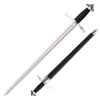 Like the original swords we have studied, our replica offers a long, wide blade with twin fully sharpened edges and a broad point. To reduce weight, increase hardiness, and maximize eye appeal we have added a broad fuller in the middle of the blade.
Like the original swords we have studied, our replica offers a long, wide blade with twin fully sharpened edges and a broad point. To reduce weight, increase hardiness, and maximize eye appeal we have added a broad fuller in the middle of the blade.
See more of the Norman Sword To reduce weight, increase hardiness, and maximize eye appeal we have added a broad fuller in the middle of the blade
To reduce weight, increase hardiness, and maximize eye appeal we have added a broad fuller in the middle of the blade
See more of the Norman Sword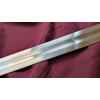 Signature Series Towton Sword High Carbon Blade with Fuller
Signature Series Towton Sword High Carbon Blade with Fuller
See more of the Signature Series Towton Sword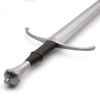 The blade tapers to an excellent stabbing point and is fullered for most of its length for lightning speed.
The blade tapers to an excellent stabbing point and is fullered for most of its length for lightning speed.
See more of the Signature Series Towton Sword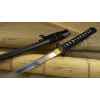 This Ko-katana features a hand forged 1045 blade with deep fuller.
This Ko-katana features a hand forged 1045 blade with deep fuller.
See more of the Musashi Ko-Katana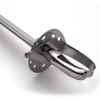 The blade is forged with a single broad fuller on each side.
The blade is forged with a single broad fuller on each side.
See more of the British 1796 Heavy Cavalry Sword High carbon C60 hand forged single fuller blade from Deepeeka.
High carbon C60 hand forged single fuller blade from Deepeeka.
See more of the Medieval Knightly Sword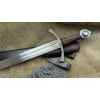 Typical of the High Middle Ages, these swords begin to show greater tapering of the blade and a shortened fuller, features which improve thrusting capabilities while maintaining a good cut.
Typical of the High Middle Ages, these swords begin to show greater tapering of the blade and a shortened fuller, features which improve thrusting capabilities while maintaining a good cut.
See more of the Medieval Knightly Sword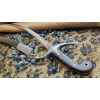 Its handsome blade is deeply curved to facilitate the devastating draw cut, and beautifully polished with a wide, deep fuller
Its handsome blade is deeply curved to facilitate the devastating draw cut, and beautifully polished with a wide, deep fuller
See more of the Persian Scimitar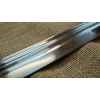 Double fullered Polish Saber blade
Double fullered Polish Saber blade
See more of the Polish Saber